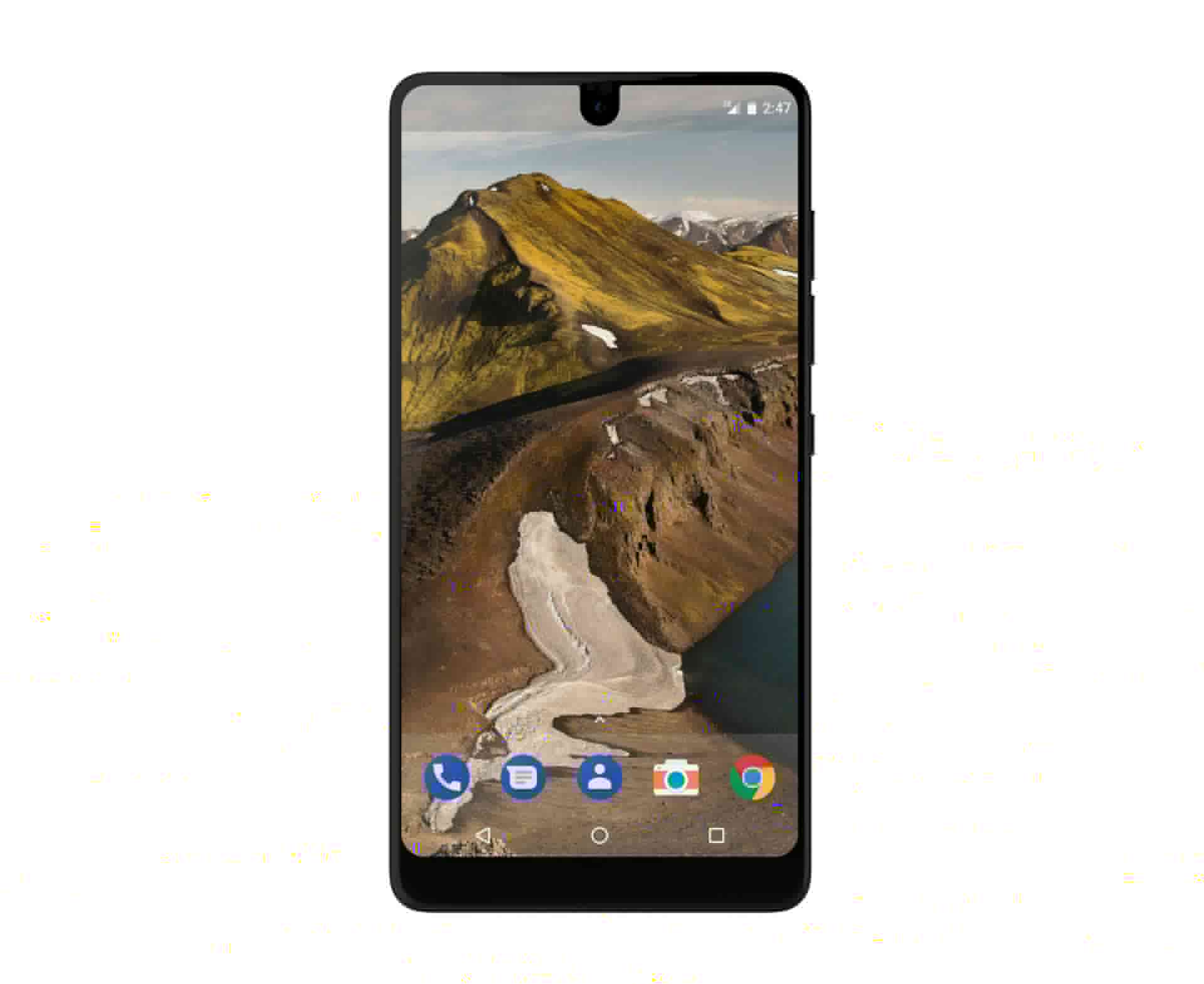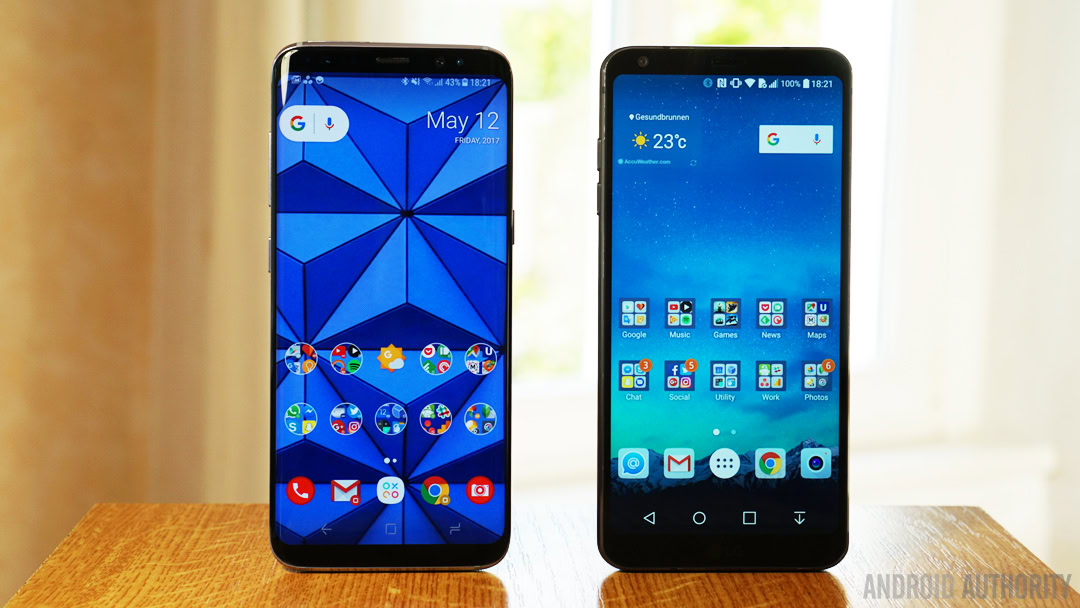Affiliate links on Android Authority may earn us a commission. Learn more.
The Essential Phone's front camera is a push towards a completely embedded world

If I’m going to talk about front-facing cameras, I’ll first need to talk about video chat. And if I’m going to talk about video chat, I need to acknowledge Skype. Ever since the service first rocketed onto the scene way back in 2003, I’ve been continuously frustrated with the state of video chat. In order to actually let your partner feel like you’re talking to them face to face, you need to sacrifice the ability to actually look directly at them. Cameras have always been placed above (or more recently below) screens on computers and phones, and this creates an incredibly awkward viewing angle for both receiving ends. If you want to look at your partner, you look like you’re looking away from their face. If you want them to see you looking at them, you have to look away from the screen. It’s a viscous cycle. Video chat has evolved dramatically in terms of quality and latency over the last 15 years, but one of the most fundamental problems has still remained unsolved.
The front of the Essential Phone takes a cue from the LG G6 and Galaxy S8, moving even further towards a nearly bezel-less design.
Andy Rubin’s Essential Phone was unveiled a few weeks ago, and its reception so far has been a very mixed bag. The body looks gorgeous but could likely be very brittle due to the ceramic build. The specs are great but it’s also missing something most of us find essential: a headphone jack. It seems like for every positive feature this phone offers there is also a pretty serious negative. Then we’ve got the front camera.
The front of the Essential Phone takes a cue from the LG G6 and Galaxy S8, moving even further towards a nearly bezel-less design. While these phones opted to place the front camera in the small upper bezel present on the front of the device, the Essential Phone slims that bezel down to an even more extreme degree, appearing to be almost completely made of screen.
So if there is no bezel, then where does the camera go? Essential thinks it should go in the top center of the display.

Ok, you may hate this move, and personally I don’t really blame you. It is certainly a bit awkward for the camera to be covering the top center portion of the screen. Look at your phone. Your status icons are on the right and your notifications are on the left. But what’s in the center? Right now, there’s nothing. And while a black bar and camera may feel like the phone version of the Moto 360’s ‘Flat Tire’ for now, we have to consider its potential for the future of smartphone design.
Bezels are only going to get smaller. That is pretty evident, especially if we extrapolate recent trends from almost every flagship phone in 2017. And as these bezels get smaller and smaller, there’s going to be less room for other essential components such as the front camera. So where is this camera going to go? If it ended up on the bottom where the bezels are also shrinking, albeit at a slower rate, we’d still end up with a Mi Mix situation, and people were not particularly happy with the result. Sticking a camera at the bottom of your device leaves your video partner staring up your nose, and most of them probably don’t want to see what’s in there. And if they do, you might want to rethink you choice of friends and co-workers.
While it might not be possible to actually hide the camera within the screen right now, surrounding it with screen is absolutely a step in the right direction. If that portion of the screen is normally filled with bezel anyways, you’re not missing out on much. Sure, you could make the argument that this portion should be used by something like the notification tray, but in its current form, Android could easily be forked to work around this. Whether or not this is the case for this particular device has yet to be seen, but we have to assume that Rubin and his team have thought about this at least a little bit.
While it might not be possible to actually hide the camera within the screen right now, surrounding it with screen is absolutely a step in the right direction.
The Essential Phone is not going to be as influential as the iPhone, and that’s a fact. While Apple may have helped sway a number of manufacturers to drop the headphone jack (including Essential itself), this phone is not going to kick off the race to embed the camera into the display. This will happen over time of course, and Apple very well may have the tech hiding up its sleeve, but for now, most of the display components and sensors are hidden within the bezel, and most manufacturers are still racing to get their own take on the infinity display onto the market.
What this move does do however, is help to show other manufacturers what is possible. Sure, there is a weird black bar stemming from the camera, but what about 6 months from now? Little by little, that black bar is going to disappear, and then, a few months after that, we will see the camera start to shrink. It’s all part of innovation.
While I can’t say what Apple and other leading manufacturers have planned for the near future, I can say this: we all want an embedded camera. And when we reach the point where the entire front of our phones are screens, these cameras will have to go somewhere, because they’re certainly not going to disappear. Selfies have taken over the world in the wake of Snapchat and Instagram, and it seems like many people use their selfie camera almost as much as the rear these days.
There’s really not much left to remove from the front of your phone, and we’re clearly propelling towards an almost entirely embedded world. With our camera hidden in that solid sheet of glass we seem to be working towards, maybe I’ll finally be able to have a proper video chat where my friends and family don’t have to look at the side of my face.